
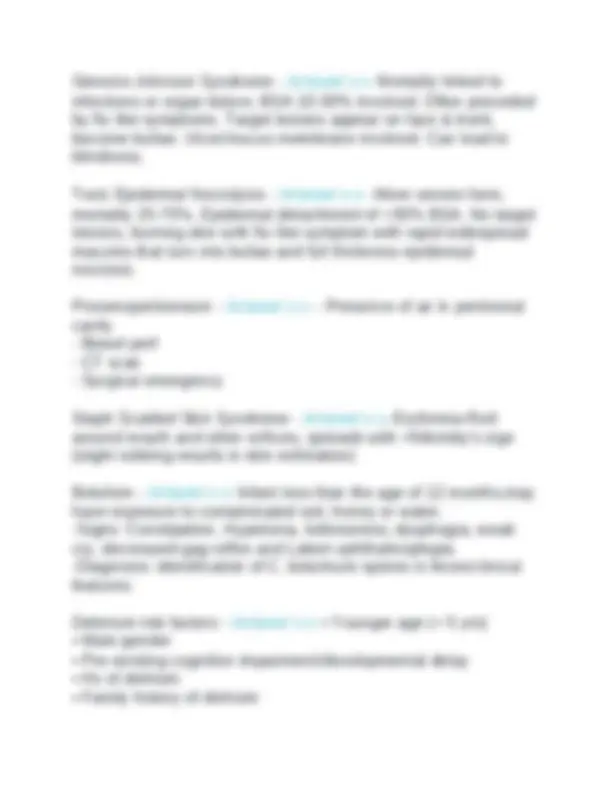
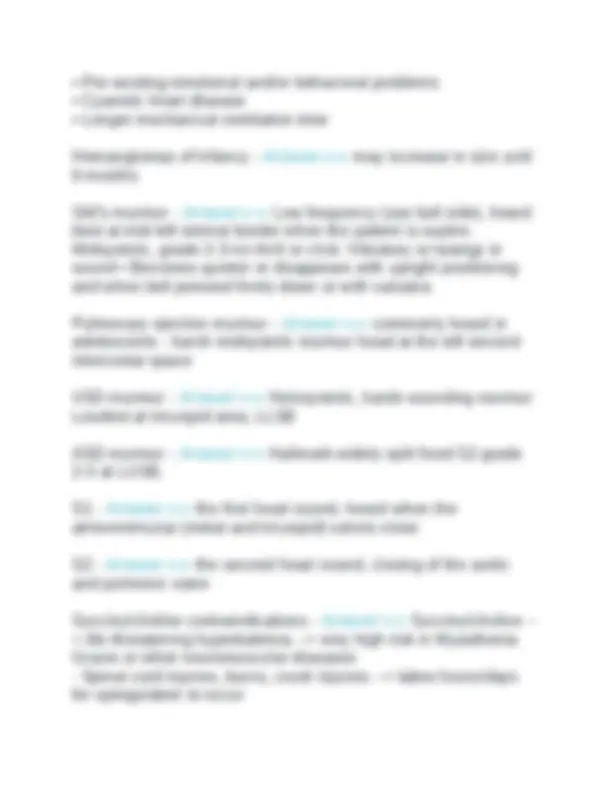
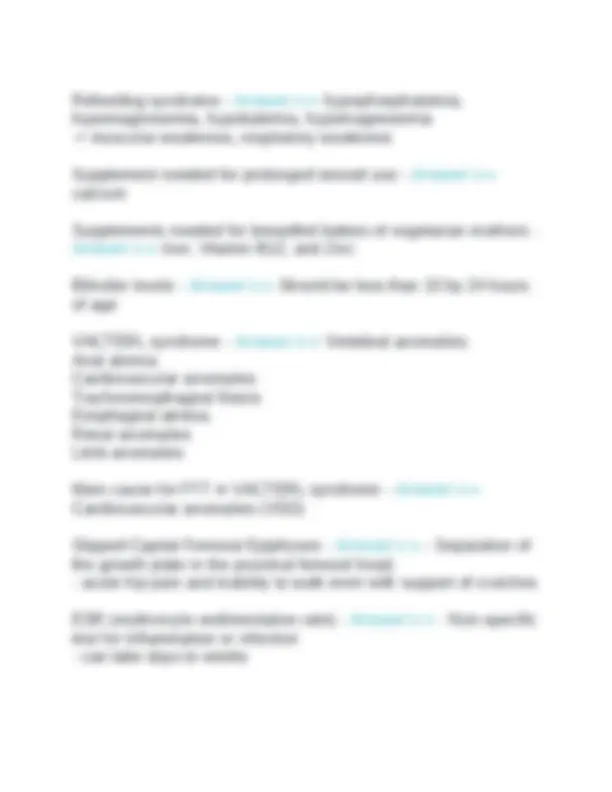
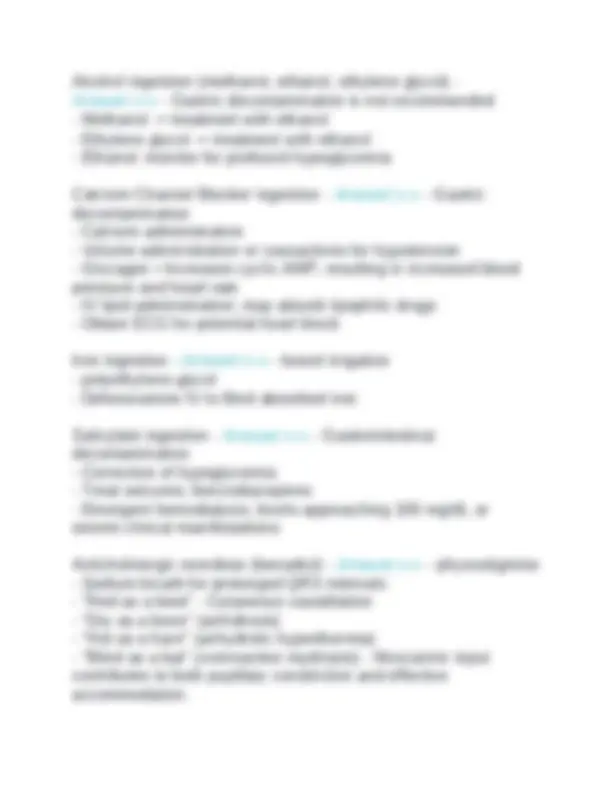
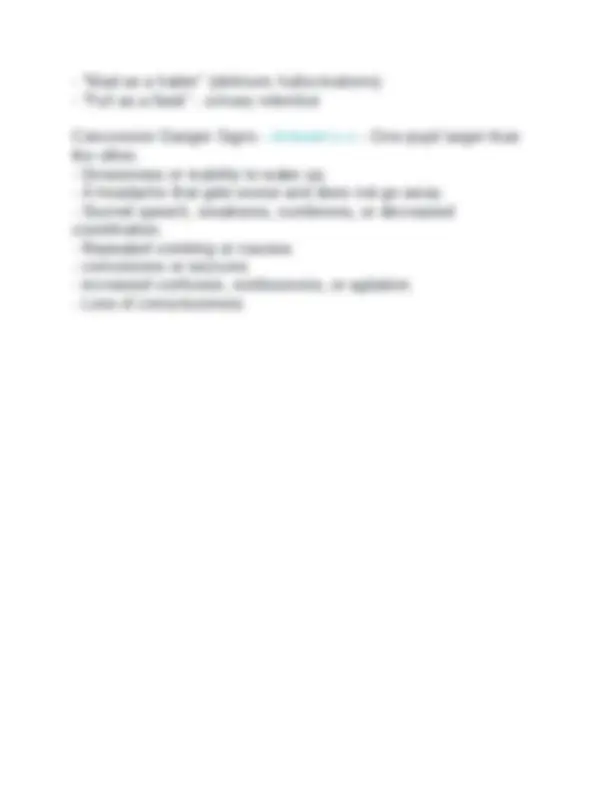


Study with the several resources on Docsity

Earn points by helping other students or get them with a premium plan


Prepare for your exams
Study with the several resources on Docsity

Earn points to download
Earn points by helping other students or get them with a premium plan
Community
Ask the community for help and clear up your study doubts
Discover the best universities in your country according to Docsity users
Free resources
Download our free guides on studying techniques, anxiety management strategies, and thesis advice from Docsity tutors
A comprehensive study guide for the pnp ac (pediatric nurse practitioner - acute care) 2024 exam. It covers a wide range of topics relevant to pediatric acute care, including symptoms, diagnoses, and treatments for various pediatric conditions such as postpericardiotomy syndrome, hirschsprung disease, intussusception, pyloric stenosis, appendicitis, bowel obstruction, meckel's diverticulum, volvulus, toxic megacolon, skin conditions like erythema multiforme and stevens-johnson syndrome, as well as information on pneumoperitoneum, staph scalded skin syndrome, botulism, delirium risk factors, heart murmurs, and medication management. The guide also includes details on laboratory values, growth and development milestones, and emergency management of poisonings and overdoses. This extensive resource would be highly valuable for nursing students or practitioners preparing for the pnp ac exam, providing a thorough review of the key concepts and clinical scenarios they may encounter.
Typology: Exams
1 / 9

This page cannot be seen from the preview
Don't miss anything!






Postpericardiotomy Syndrome Symptoms - Answer>> fever, pericardial effusion, fatigue, chest pain, irritability, poor PO intake. May lead to cardiac tamponade. postpericardiotomy syndrome treatment - Answer>> NSAIDS (5-7 days) or systemic steroids Hirschsprung disease - Answer>> - aganglionic megacolon -rectal biopsy
life-threatening hyperkalemia --> very high risk in Myasthenia Gravis or other neuromuscular diseases
Refeeding syndrome - Answer>> hypophosphatemia, hypomagnesemia, hypokalemia, hypomagnesemia -> muscular weakness, respiratory weakness Supplement needed for prolonged steroid use - Answer>> calcium Supplements needed for breastfed babies of vegetarian mothers - Answer>> Iron, Vitamin B12, and Zinc Bilirubin levels - Answer>> Should be less than 10 by 24 hours of age VACTERL syndrome - Answer>> Vertebral anomalies Anal atresia Cardiovascular anomalies Tracheoesophageal fistula Esophageal atresia Renal anomalies Limb anomalies Main cause for FTT in VACTERL syndrome - Answer>> Cardiovascular anomalies (VSD) Slipped Capital Femoral Epiphyses - Answer>> - Separation of the growth plate in the proximal femoral head.
Serum sodium > 150 Urine sodium < 30 Syndrome of Inappropriate Antidiuretic Hormone (SIADH) - Answer>> UOP: <1 mL/kg/hr Serum sodium < 135 Urine sodium > 30 Cerebral salt wasting - Answer>> UOP: 2-3 mL/kg/h Serum sodium < 135 Urine sodium > 80 Disseminated Intravascular Coagulation (DIC) - Answer>> Thrombocytopenia, prolonged PT, PTT, *+D‐dimer idiopathic thrombocytopenia - Answer>> - May spontaneously go into permanent remission. If condition continues long term
Alcohol ingestion (methanol, ethanol, ethylene glycol) - Answer>> - Gastric decontamination is not recommended